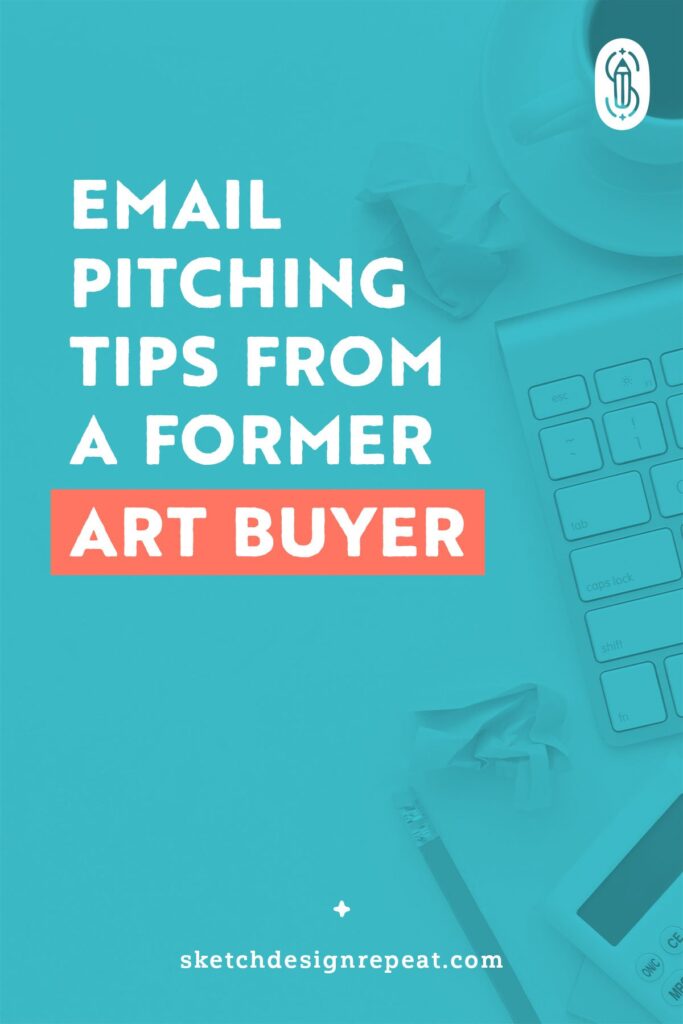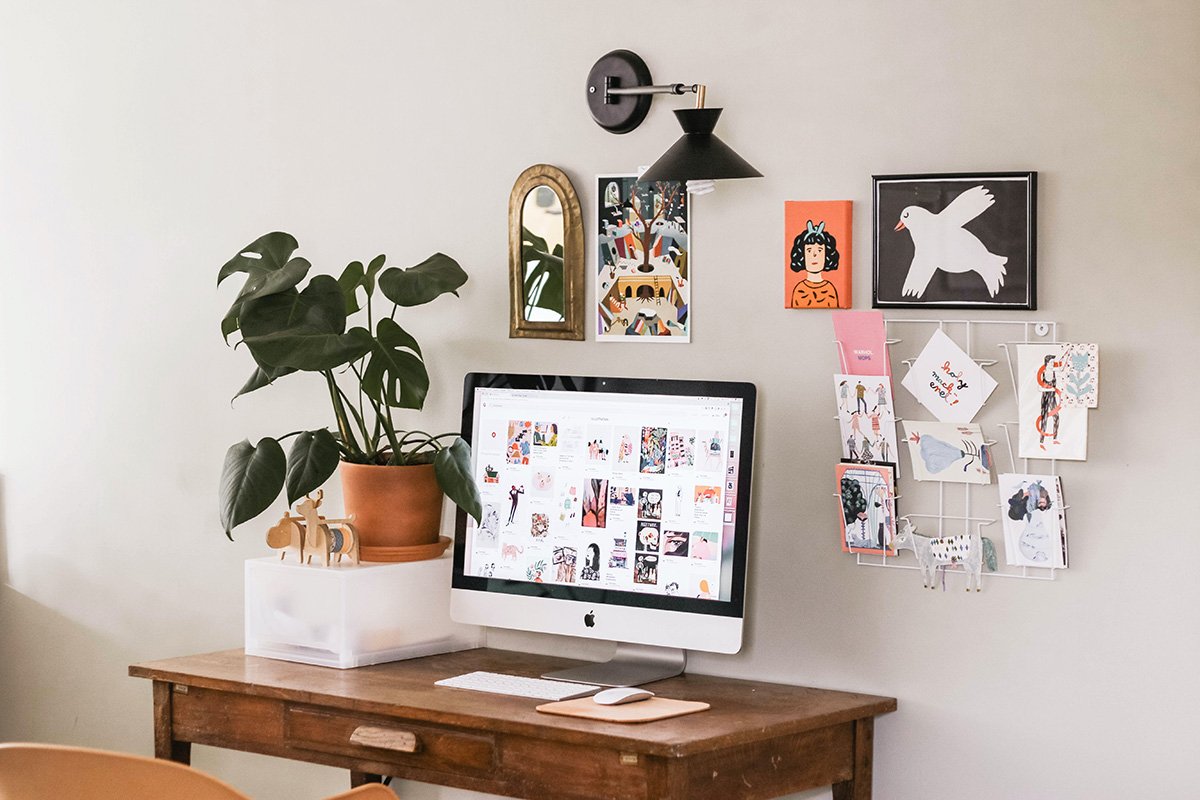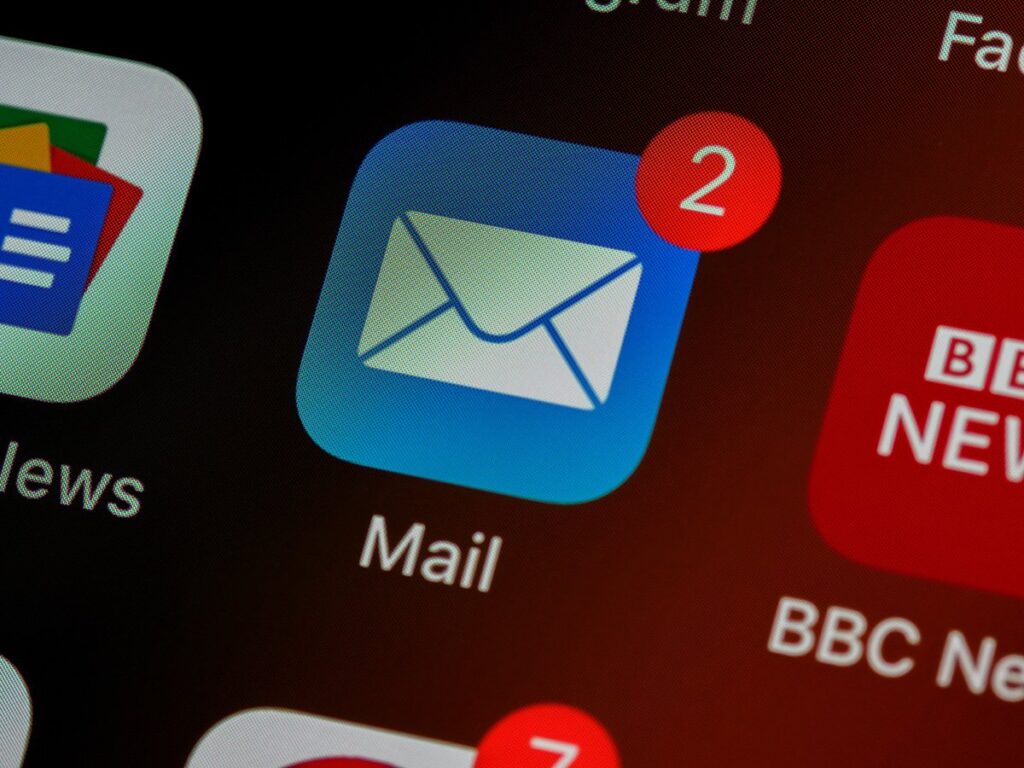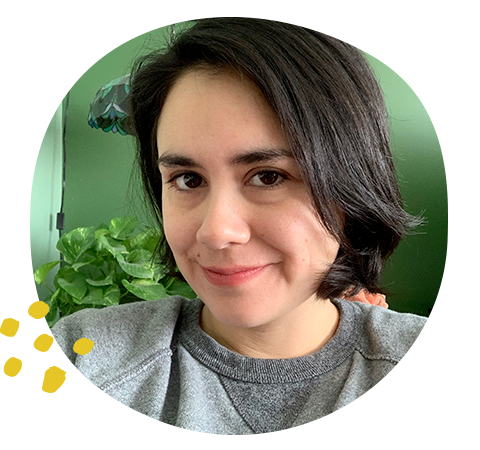My last in-house job, prior to pursuing a career in surface pattern design and illustration, was as an art buyer. I began as a graphic designer and illustrator, then had the opportunity to establish and develop the role of art buyer at the company I represented. I held the position for five years. At the time I left I was responsible for managing the designer relationships for over 90 artists.
As a former art buyer, I’ve seen all types of cold emails: the good and the bad. I could always spot the ones that were phoning it in. Even worse were the ones that looked like a text message with bad grammar, without any attachments of their art or a link to their website. It didn’t make me want to work with them because if they couldn’t take the time to compose a simple email then it didn’t look good for a decent working relationship.
Even if the work was amazing I would hesitate because experience told me they would be difficult to communicate with and that I would eventually not want to assign work to them.
I know putting yourself out there and introducing yourself can be challenging, but showing your art in addition to that makes it even more difficult. It’s an act of vulnerability, but I assure you that pitching your work to art buyers doesn’t have to be scary.

Remember, art buyers are people, too!
They have lives, dreams, and responsibilities. Be empathetic to their needs and building a relationship with them will go a long way. Making a good first impression will go a long way, because let me tell you, they receive tons of emails every day from artists who want to work with them. Continuing to be authentic and respectful in your interactions will help them to keep you in mind for their next project.
The key to any introductory email is personalization.
Here’s an example of a good cold email pitch:
Hi Cody,
I enjoyed the launch of the Mother’s Day “product” collection that was released this week by “My Dream Client.”
I wanted to reach out and share my information in case you’re in need of new artwork for your products. I’ve attached some images that I think would be a great fit, but you can also see more of my work on my website.
I would love to work together! Thank you for your time and have a great day.
Best regards,
Jane Artist
www.yourportfolio.com
www.yourinstagram.com

Let’s break this email down and explore why this example reflects an effective cold pitch.
The Greeting
This is one of the ways to personalize your email. It starts out with a real name. Don’t use a generic greeting such as “Dear Art Team” or “To Whom It May Concern.” I know it can sometimes be difficult to find the names for contacts, but taking the time to do your research can help in establishing a connection.
Finding an art buyer’s name could be as simple as emailing or calling their customer service department and asking. There were several artists I ended up working with who were able to find my name and email this way.
Also, make sure you check the company website. It might have a specific contact or form they would prefer that you use to reach out.
This is how the company I worked for initially instructed artists who were interested in working for them. My own work email address wasn’t used, but the address that was shown on the website would automatically forward to my inbox. Although the company website didn’t give my name, there were a few artists that found it and that always impressed me when I read their emails.
Related Article: The 4 Types of Replies You’ll Get from an Art Director – including advice on how to respond to each!
Introduction
This is also where doing your research and adding that extra personalization is essential. In this example it references a new product collection that the company has recently released. This is helpful because they know right away that you are familiar with their products and company, or that you have at least taken the time to research their current launch in a thoughtful manner; however, make sure you are genuine and don’t go overboard with praise. Too much praise and detail can quickly transition from thoughtful to off putting.
The Pitch
Now that you’ve established that you have an understanding of the company you’re contacting, finalize with the purpose of your contact. Attach images of work that you think would fit within their brand, and also include a hyperlink to your website in both your copy and signature in case they want to see more.
Be clear and direct. The reason you are emailing is to sell your artwork or help them with their artwork needs, so make sure you communicate that fact.
The Conclusion
I always appreciated it when an artist showed some warmth in wanting to work together and when they thanked me for my time. There are a lot of moving parts that go into product development and art acquisition is only one facet of the process. When the start of the relationship is built upon the understanding that you are there to help, it establishes a good rapport.
Another thing to bear in mind is that art buyers, like everyone else, are busy. It can take a while for them to get back to you, if at all. I made it a point to respond to every artist who emailed me, but there were times it would take me six months to do so. Don’t be surprised, or worried, if you don’t receive an immediate response.

Best Practices for Before You Send Your E-mail
- Ask yourself if your art is a good fit for the style of artwork the company is already acquiring for their products. Do you think your art would translate well? Shannon’s Pitch Your Portfolio course really helps clarify this.
- Follow any specific submission guidelines provided before reaching out. If a company has a process already in place for submissions, it’s frustrating to receive correspondence in a way that’s different from what is requested.
- This was my particular preference but I think it’s worth considering: don’t include an image in your signature. I had a set amount of space for my email account — when your logo is included in your signature it really adds up fast in your communication thread. I would recommend a simple text signature with your name, brand tagline, website link, and social media of choice.
If you take away anything from this article, remember that you are contacting a real person.
The absolute worst thing you could do professionally if you are rejected is to throw a temper tantrum over email. If an art buyer is slow to respond or doesn’t accept the work that you have submitted, it is not personal.
I’ve had this happen and it’s not pretty.
It also immediately burns a bridge, especially if the art buyer has already taken the time to respond and provide feedback.
Take the time to calm down — take a day if you need it — but think about your response. The best follow-up emails are the ones that try to gain clarity on why they weren’t accepted and were graceful in their response.
One rejection doesn’t mean that you can never submit to or contact that company again. It’s more important that you introduce yourself and build a relationship so that you create opportunities for future art needs.

Written by Cody Alice Moore
Website: www.codyalicemoore.com
Instagram: @codyalicemoore
Class: Client Feedback Strategies for Creatives
Cody is an artist, illustrator, and surface pattern designer with over 15 years of experience. Cody discovered surface design while working for four years as an art buyer for a national photo lab. Since 2019, she has been creating art full-time for her budding portfolio and growing collection of licensed designs.
Thank you for being so clear and helpful!
Really though, it’s the finding of names and emails. Trying to balance finding time on this vs making more work is definitely a challenge and I’m still working on this.
Yes, finding who to directly contact is definitely one of the toughest (and time-intensive) parts of the process! And I’ve found that scheduling research time in regular intervals helps me (and it’s helped many of my Pitch Your Portfolio students where we dive deep into this subject).
Great tips, Cody! Your example and explanations provide a wonderful starting point for a newbie like me. Thank you!
Great tips Cody! I am guilty of not putting a name in my greeting. I usually just start with "Hello". I will use the person’s name if they responded to my initial email. In the latest round of mails that I just sent out, I decided to add the first names to the greeting no matter if they had responded or not. Way more opens and multiple ones at that…..
I’ll be keeping your advice in all my subsequent emails! Thank you!
So what do you do when all and I do mean ALL attempts at finding a specific name fail? Including paying for e-mail search programs, or LinkdIn. Or if when you do actually get the nerve to call the company the gatekeeper insists on having you send your pitch to the “info@xyzcompany.com” and you do and never get a response? I mean, did it really get to the right person? (Rhetorical question)
I absolutely understand your frustration because trying to find contact info is consistently one of the hardest aspects of the process. In my experience, there are many different ways to find information and the size of the company has a major impact on which strategies an artist should use. And what works to find one art director, won’t work to find another. That’s when you have to get creative. Try a new strategy. It can honestly take years to track down the information of a particular person at a company. I know it may not be easy, but it is almost always possible… eventually.
@Robin – Do you know for certain that the company you’re trying to pitch actually accepts artist submissions? Most large corporations have in-house designers and don’t accept artist submissions from outside of their company. If you let me know what company you are looking to reach, I might be able to help you with your search.
@Stacie – Actually in my experience many (but not all) large companies do license artwork 🙂
If the company does have a specific submission form on their website for instance, is it still important to try and find a name if there isn’t one given?
You can’t, but it isn’t as necessary if they’ve already built a submission form. Because you should ALWAYS follow instructions if they have them 🙂
One thing I really struggle with coming up with subject lines for my pitch emails! Any tips?
Thanks for this post – I’ve come back to it more than once. : )
Keeping things simple by using something like “surface designer art submission” or “artist introduction” is usually the best policy for the pitch email because you don’t want to be too clever that they aren’t sure what the email is about and immediately put it in the trash.
Hello. Just found your site. Looks very informative and very interesting. Need to Lear more. Thank you for the post.
Thank you for your content on the business side of surface design and for sharing your knowledge. I would love to know your story of how you started/fell into the surface design and then onto the business side.
Thanks for the very useful information in this article.
This is such valuable insight! Personalizing emails and being thoughtful in the approach really does make a difference. It’s a great reminder that relationships matter in this industry!